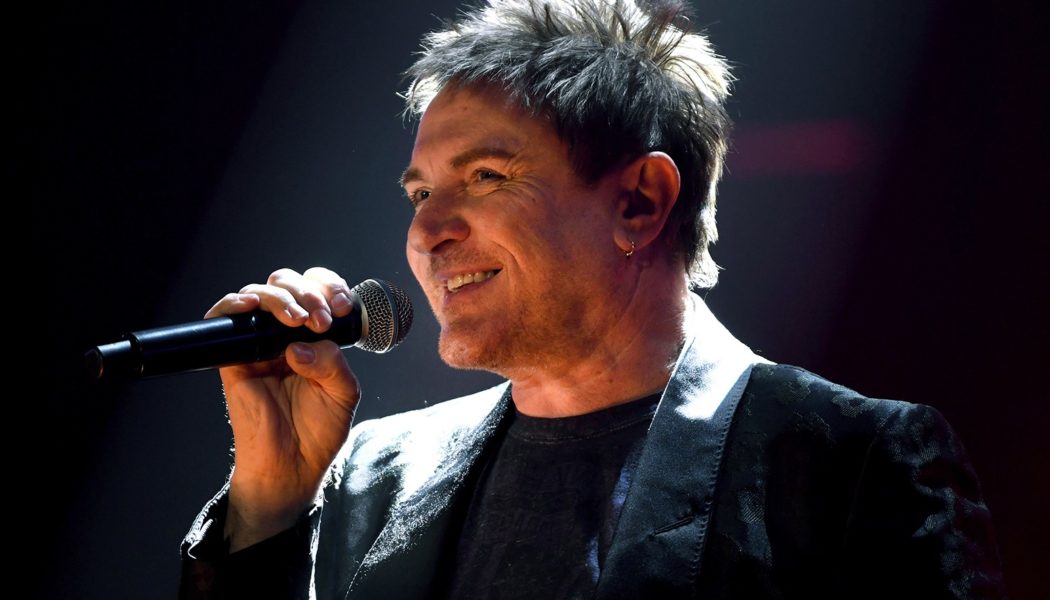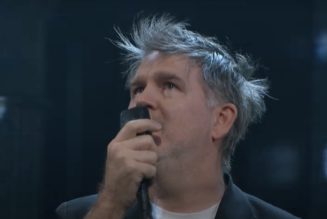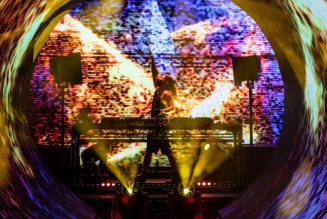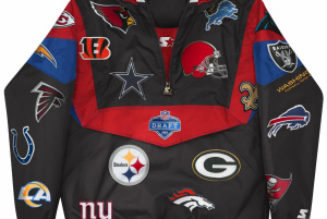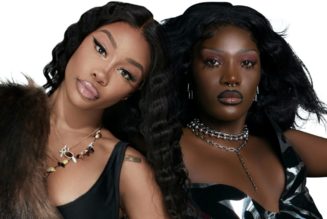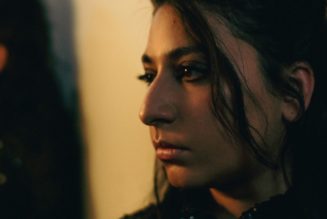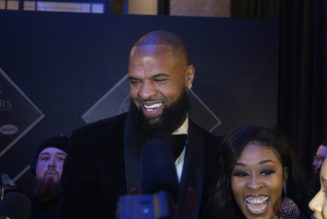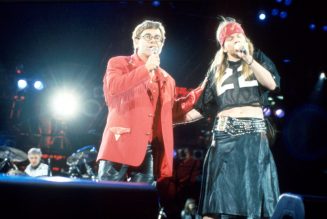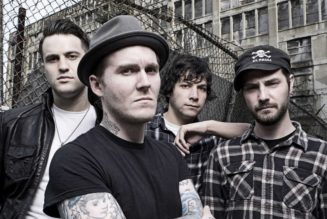
Onboard for Future Past — Duran Duran’s 15th studio album — are producers Erol Alkan, Mark Ronson and Giorgio Moroder. The set will also feature special guests in Blur’s Graham Coxson on guitar, David Bowie’s former pianist Mike Garson, and guest vocals from the “absolutely magical” Lykke Li (with more collaborators promised to be announced at a later date).
On the Pop Shop Podcast, Le Bon chats about how “Invisible” evolved over time and speaks to those “who feel they haven’t got a voice,” how its eye-popping music video was created using an artificial intelligence named Huxley, why there was a long wait between albums, and how the band connected with producer Alkan. In addition, Le Bon also discusses his joy in hosting his weekly music show Whooosh! on SiriusXM, alongside Duran Duran insider and band associate Katy Krassner. Le Bon says the new music-filled program has been a “wonderful experience” and gushes about the “amazing new music I’ve been able to discover.”
Plus, as 2021 marks the 40th anniversary of Duran Duran’s first single (“Planet Earth”), self-titled debut album and the group’s first Billboard chart appearance (with “Planet Earth” on the Dance Club Songs chart), we take Le Bon for a stroll down memory lane to the band’s first encounter with Billboard in 1981 (and the act’s first Billboard Hot 100 No. 1 with “The Reflex”).
Below are some highlights from Le Bon’s interview on the Pop Shop Podcast:
On how the new single “Invisible” came together and why it was the right statement for the band to come out with right now:
The song started as drum beat, actually … you can hear it, you can tell how important that drum beat is, you know … And really, we all serve the drums, in a way. The lyric, I think I started off with “shy, one.” I think it might have been “shy, boy” to begin with, but then I thought I wanted to make it a bit more inclusive.
It soon developed into this idea of a person who, in a relationship, was not really being registered by the other person. Being ignored, really. And it started to be, well, maybe this person isn’t registering with everybody around him. Maybe his family, or maybe the world in general.
And then it occurred to me, wow, but there’s loads of people like this. There’s a whole section of society who feel they haven’t got a voice, who feel they’re ignored and don’t get listened to. And it’s one of the reasons we’ve had these massive social public protests recently, for example, the Black Lives Matter movement, which (has) been such an important part of all our lives in the last year. And I wrote that line “but a voiceless crowd isn’t backing down” because these people may not be ignored, but they refused to be ignored, and they will actually … they will assert themselves. I think that’s really what the song’s about. It’s called “Invisible,” but it’s actually about making yourself visible.
Le Bon on the music video for “Invisible” and how it was made by an artificial intelligence named Huxley:
Huxley is a creative A.I. that’s been developed by a bunch of people called Nested Minds. Really at the heart of all this is neuroscience. The way the human mind works. And what they’ve done with Huxley is they’ve kind of made an approximation of the way that people think thoughts are created inside the human brain.
You can see Huxley as a program, but it’s not. It’s got so much more going on. It’s very complex and it’s so complex it affects itself. And it learns. I mean, it’s a big stretch to say that it thinks. Maybe we could say it dreams. Obviously it’s not conscious. Because conscious A.I. is, well, then you’re talking science fiction these days … It’s not conscious.
You input images [into Huxley]. Images of the world, images that relate to previous Duran Duran lyrics, images of the band. I mean, there’s also the lip-syncing [in the video] that we did that was put in the machine as well. … You put all this stuff in, and the words [to the song], and Huxley puts it all together, and then it just runs. It dreams these images. And they go with the music. The music’s also inputted into it.
That’s how I understand it. I know it’s a pretty vague explanation, and I feel like I’m slightly bullsh—ing [you] because I don’t really understand it to be honest with you, because I’m just a frontman.
It’s been six years between Duran Duran studio albums — the longest gap between studio albums for the band. Did Le Bon realize it had been this long, and why the long wait?
I knew it was a long time. And obviously the big reason it took such a long time was the emergence of COVID-19. A global pandemic and the ensuing lockdown. And how that affected, not just our working schedules, but also life in general, and one’s ability to have… really, have music that could make any kind of an impact.
We thoroughly intended to get this record out in 2020, but everything suddenly shut down. And then we thought, hang on, let’s not rush this. We don’t know what’s going to happen. And it would be very easy for the album to go out there and become completely overlooked or just disappear in comparison with the other things that are happening in the world. So we thought, we’ll just hang on for a minute.
And in that time that we hung on, we had an opportunity to step back. In a way that an artist who’s working on a small detail in a painting [steps back], at some point he has to step back and look at it as a whole and think, A) is it finished and B) is it good enough? And we actually thought, you know what, it’s not finished, and it’s not good enough. And we can make it better, and we can make it complete. We’re actually in the process of doing that right now. The album doesn’t get released until Oct. 22. We just want to make this one the best piece of work it can possibly be for now.
How Duran Duran connected with producer Erol Alkan:
It’s kind of strange that we’d never met before. But it was actually Mark Ronson who came up with this name. Because we approached Mark and said, “What do you think? Do you want to be involved at any level, in any capacity, what do you think?” And he said, “Yeah, I’d love to do a couple of tracks with you. By the way, [if] you want somebody to kind of to work with on the body of [the album], then you should meet up with this guy Erol Alkan.”
He’s a DJ, he’s been producing music for the dance floor for a long time. He did the remix of a Killers song called “The Man.” He actually reformatted the song. He moved things around. He gave the song a dynamic. Funny enough, I’d heard a demo of it, and he really turned it into something that you could listen to and it really worked. And it’s his version that was released as the single. So Erol… he’s amazing. He’s really good.
I went to his house to work on some stuff with him one day. He’s got a nice little studio in his back garden. And he said, “Look! This is the first record I ever bought!” And it’s the 12-inch (vinyl single) of “The Reflex.” His first-ever purchase. You know… what comes around… I meant, what goes around! [Laughs]
2021 is the 40th anniversary of the release of Duran Duran’s first single, “Planet Earth,” the group’s self-titled debut album, and the band’s Billboard chart debut (with “Planet Earth” on the Dance Club Songs chart in 1981). Le Bon recalls his first encounter with Billboard magazine, and getting Duran Duran’s first No. 1 on the Billboard Hot 100 with “The Reflex.”
I think we came over to America in late 1981 for the very first time. It was a hell of a trip. You can imagine. A bunch of English boys [laughs] getting off the airplane at JFK … We met up with our record company at the time, which was Capitol Records. We went up into their offices [in New York]. And I remember somebody getting out the Billboard magazine. And I think the [Hot 100] chart was on the back cover. And he said, “This is what it’s all about.” And you looked at those names… Bruce Springsteen and others. And thought, wow, yeah, if only. And then one day somebody… I think we were in the U.K. at the time, and we knew we’d had a No. 1. They sent us the actual copy [of the chart] with ‘The Reflex’ at No. 1… And that was a really big deal for us.
Also on the show, Katie & Keith discuss chart news about Olivia Rodrigo’s second debut at No. 1 on the Billboard Hot 100 with “Good 4 U,” while J. Cole debuts atop the Billboard 200 albums chart with his newest release The Off-Season, as well as debuting four of its songs in the top 10 of the Hot 100.
The Billboard Pop Shop Podcast is your one-stop shop for all things pop on Billboard‘s weekly charts. You can always count on a lively discussion about the latest pop news, fun chart stats and stories, new music, and guest interviews with music stars and folks from the world of pop. Casual pop fans and chart junkies can hear Billboard‘s deputy editor, digital, Katie Atkinson and senior director of Billboard charts Keith Caulfield every week on the podcast, which can be streamed on Billboard.com or downloaded in Apple Podcasts or your favorite podcast provider. (Click here to listen to the previous edition of the show on Billboard.com.)
